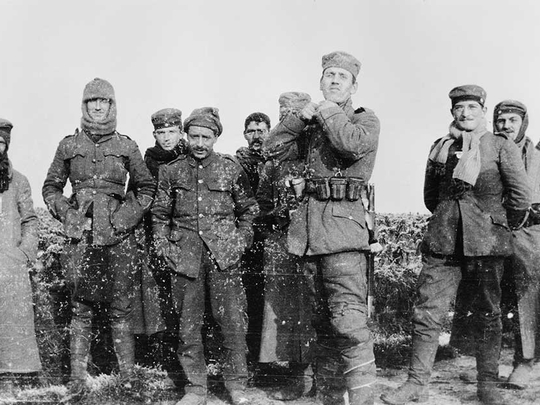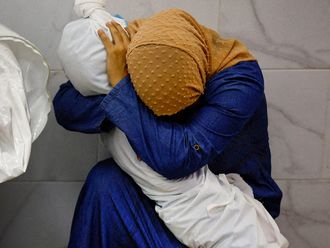
London: Soldiers sharing cigars, singing songs and walking about together in No-Man’s-Land on Christmas Day 1914 are some of the poignant scenes described in a rare, never seen before letter uncovered by Staffordshire County Council’s Archives Service.
In a letter to his wife, written on Christmas Day, General Walter Congreve VC explains the extraordinary circumstances around the Christmas Truce of 1914.
Congreve, who led the Rifles Brigade, was positioned at British Headquarters near Neuve Chapelle in Northern France. In his letter, he recalls how it was the Germans who had called for a day’s truce, which was agreed to when one of his men bravely came out of the trenches to agree to it.
Officers and men on both sides met in No-Man’s Land where they shook hands and exchanged cigarettes and cigars. A British Captain is said to have talked with the German Colonel and “smoked a cigar with the best shot in the German army”, a lad of no more than 18 years old.
In the letter, Congreve also talks of his reluctance to join in the truce himself, for fear of the Germans not being able to resist a shot at him because of his rank as a General. And, the talk of the trenches was of a game of football between the German and British soldiers taking place earlier that day further along the lines.
Cllr Ben Adams, Cabinet Member responsible for Archives at Staffordshire County Council said: “The 1914 Christmas Day Truce is one of the iconic memories of World War One and to have such a detailed account from a high-ranking officer, written on the actual day is a real gem.
“The fact that the letter has come to light in the year we commemorate the centenary of the Great War makes its existence even more special. We are incredibly proud to be the custodian of such a valuable document which we will protect and preserve so it can be shared and enjoyed by generations for years to come.”
Anthony Richards, Head of Documents and Sound at the Imperial War Museum said: “There are various accounts of the Christmas Truce story and this is a particularly interesting addition, with Congreve’s description broadly matching those incidents known to have occurred at that time, with both sides fraternising in No-man’s-land between the trenches.
“A particularly nice feature of the letter is Congreve’s reluctance to witness the Truce for himself, fearing the temptation for the enemy to have a shot at him.”
Joss Musgrove Knibb, spokesperson for the Staffordshire Regiment Museum and author of First Lines added: “This letter adds to the comparatively small but incredibly important national cache of letters written during the days of the Christmas Truce. Many details it contains are corroborated by a letter held in the Museum’s archives written by Captain Reginald Armes, an Officer of the 1st North Staffords who also witnessed this extraordinary event. It is a treasure, made all the more remarkable that it has only come to light a century after the events it describes.”
The Christmas Truce is believed to have been in place from Christmas Eve for around 48 hours, although in some sections of the line it is reported to have lasted much longer. The 1st North Staffords were in the Rue du Bois area in a section of trench known as ‘Dead Man’s Alley’ from December 11th to December 31st.
Congreve was born on 20 November 1862 to parents William and Fanny E Congreve from Stafford. Congreve and his son Major William La Touche Congreve both received the Victoria Cross, making them one of only three father and son pairs to be awarded the honour.












